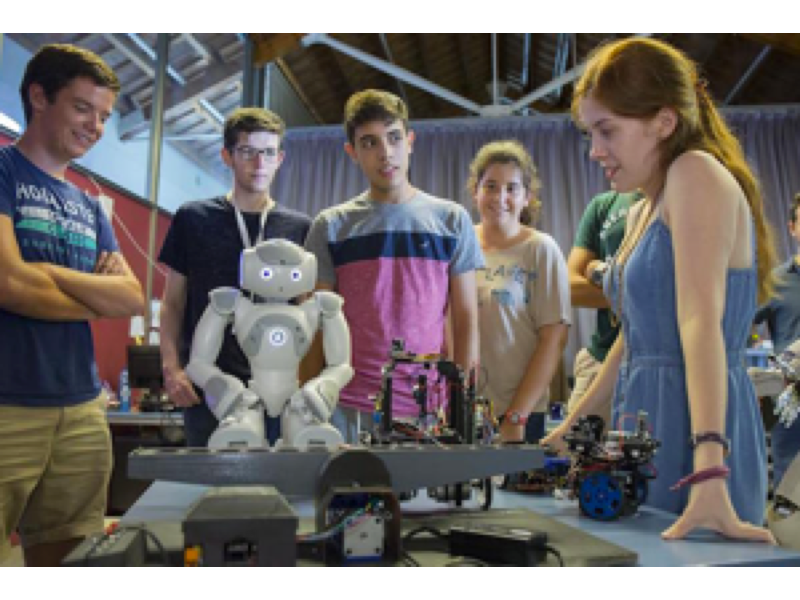To understand brains we need to start from the simplest animals: take for example the worm C-Elegans with only 350 neurons, able to look for food, remember food locations and mate. Brains originally evolved for movement: consider as an example phototaxis, the movement away or towards a stimulus or light which can be easily implemented with a robot by directly connecting sensors and motors. These behaviours are considered to be reactive a direct mapping from sensors to actuation.
You will consider how we can build up more complex behaviours introducing learning and memory into play.
You will be able to add more complex layers of behaviour following the structure of the Distributed Adaptive Control (DAC, biologically based control Architecture developed at SPECS). DAC assumes that behaviour is organized in layers from reactive, to adaptive (simplest learning) and contextual (including memory and learning). You will learn how to implement using robots a series of increasingly complex animal tasks that go in the direction of solving a general foraging task following the structure of a neuro-biological control strategy based on DAC.
Introduction to neuro-robotics.
- Localization and mapping from a neuroscience perspective.
- Motor control, learning and adaptive reflexes.
- A practical case: self-regulation and foraging.
- Social coordination components of behaviour.
- A practical case: a robot coordination task.
- Robotics, music, programming, and education.
In 2015, this course was sponsored by La pedrera Foundation. More information here.








